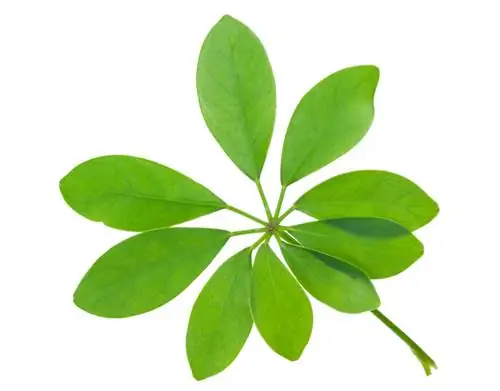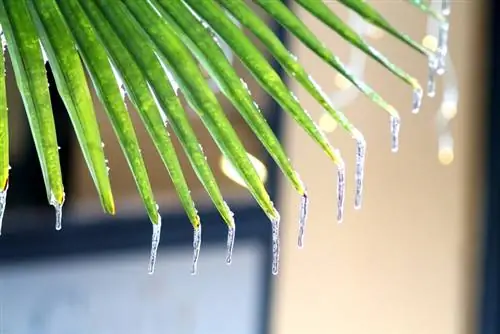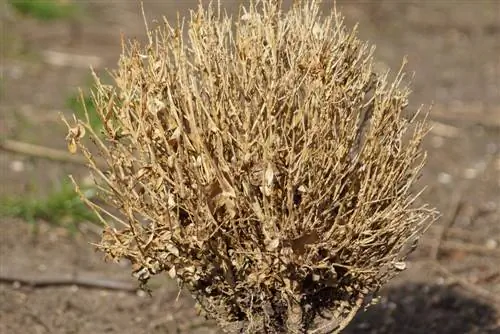- Author admin [email protected].
- Public 2023-12-16 16:46.
- Last modified 2025-01-23 11:22.
Even an easy-care plant like the elephant's foot cannot do without attention. However, too much of a good thing usually does much more harm than too little. An excess of water and/or nutrients causes it to die easily.

What to do if the elephant's foot has been watered too much?
If the elephant's foot has been watered too much, yellow leaves will appear as the first sign. A soft trunk is a warning sign. To save the plant, you should replace the soil and temporarily refrain from watering.
How much water does the elephant's foot really need?
The elephant's foot is native to tropical areas, so overall it doesn't need too much water. However, if you only water it a little but quite often, you are not doing the plant any good. The elephant's foot, on the other hand, tolerates a constant alternation between plenty of water (without the roots being wet) and a dry period in which the soil also dries out.
The thick “foot” at the bottom of the trunk is used by the elephant foot to store nutrients and water. If it were supplied with water regularly, it would not need this storage organ at all. So he is used to water only being available to him irregularly. Accordingly, you should water an elephant's foot abundantly, but less frequently than other houseplants.
Can elephant foot tolerate hydroponics?
In classic hydroponics, the elephant's foot practically has its roots in the water. That doesn't sit well with him at all. This often causes the trunk to become soft and the elephant's foot begins to rot and die. If you are familiar with hydroponics, you can try cultivating an elephant's foot like this. However, the water level should always be relatively low.
How do I know if I'm watering too much?
If the trunk of your elephant's foot becomes soft, then the plant has definitely received too much water and over a long period of time. It may already be too late for rescue. Therefore, react early, for example if the leaves turn yellow or the soil is permanently wet. Avoid watering for a while and replace the soil if necessary.
The most important things in brief:
- first signs of too much water: yellow leaves
- Warning signs: soft trunk
- Rescue: Exchange Earth
Tip
If the soil on your elephant's foot is very wet, it is better to replace it with dry soil.






